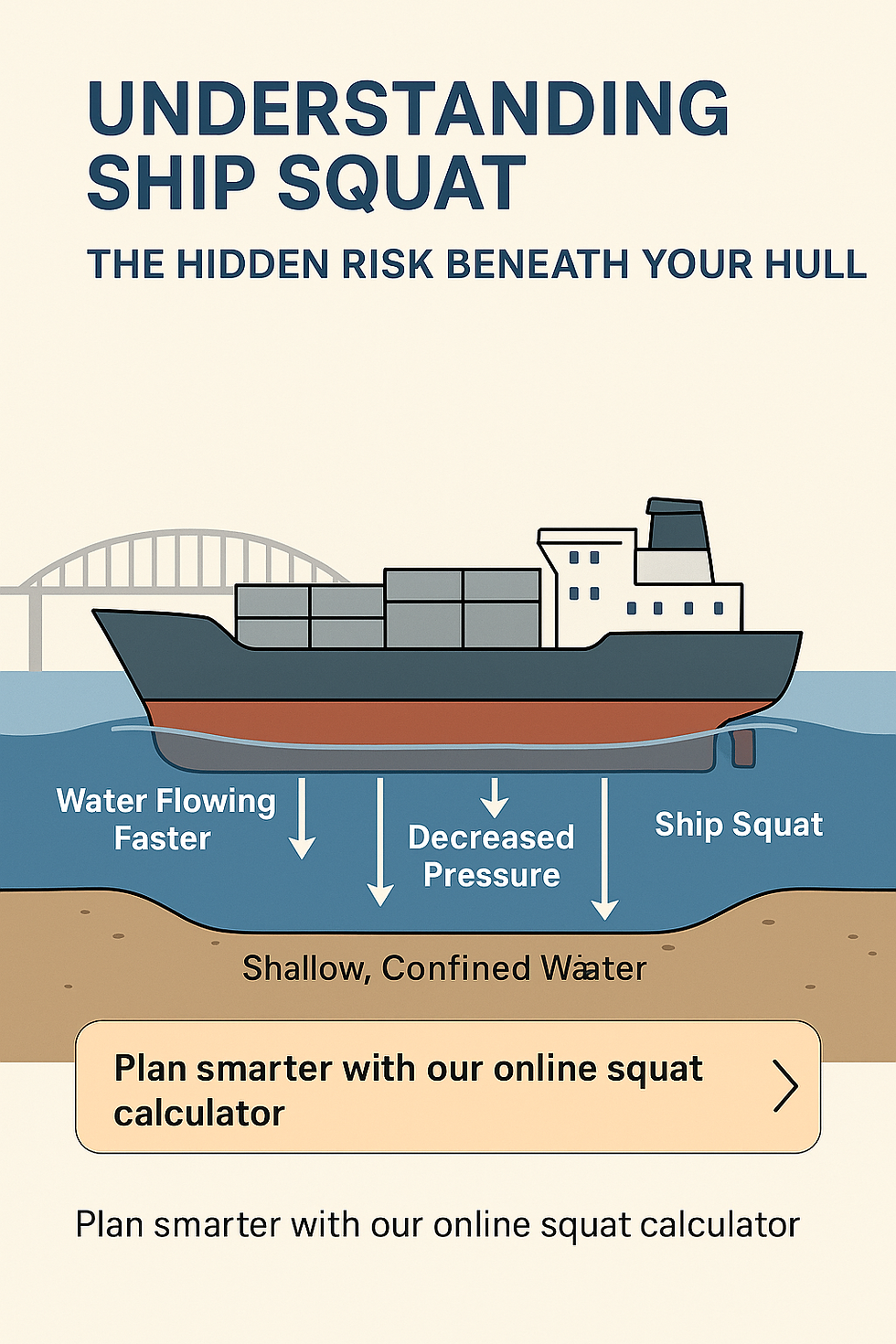Ship Squat
- Admin

- Sep 13
- 2 min read

Understanding Ship Squat – The Hidden Risk Beneath Your Hull
When a vessel moves through the water, it doesn’t always sit the same way as when it’s still. Many mariners know the term, but too often it’s underestimated: Ship Squat.
What is Ship Squat?
Ship squat is the effect where a vessel sinks deeper into the water — and sometimes trims by the bow or stern — when moving, especially in shallow or confined waters.
Think of it this way: as the ship increases speed, the water flowing beneath the hull accelerates. Faster flow = lower pressure. Lower pressure = the ship is pulled downward. That’s squat.
Why Does Ship Squat Happen?
Speed: The faster the vessel goes, the stronger the effect.
Water depth: Shallow water makes squat more severe.
Channel width: In narrow channels, the water has less room to move, so the pressure drop is greater.
Hull type: Bulk carriers and tankers often squat more at the stern, while container ships may feel it more at the bow.
Why is Squat Important?
Ignoring squat can be dangerous:
A ship that looks safe at 12.0 m draft can suddenly “squat” 1–2 meters deeper at speed.
That reduces Under Keel Clearance (UKC) and increases the risk of grounding.
In rivers and approaches with limited depth, squat is often the deciding factor for safe transit.
Real-World Examples
Bulk carrier entering a river: Draft 12.0 m at berth, but while steaming upriver at 12 knots, the ship squats nearly 2.0 m at the stern — suddenly the effective draft is 14.0 m. Without planning, grounding is almost certain.
Container ship under a bridge: Squat doesn’t just reduce clearance below — it also changes trim. A vessel trimming by the bow might unexpectedly reduce overhead clearance (OHC) near bridges or gantries.
Every voyage plan should include squat. But you don’t need to guess, and you don’t need to work it out by hand. On Master Work Station (MWS) we provide a free online squat calculator to help mariners quickly check expected squat at different speeds and water depths.
👉 Use it here: www.master-workstation.com
⚠️ Important Reminder
Always follow your company’s UKC and squat policy. Minimum requirements vary by area, chartering instructions, and company rules. If calculated squat reduces UKC below safe limits, consult your Marine Superintendent for risk assessment and approval.
Comments